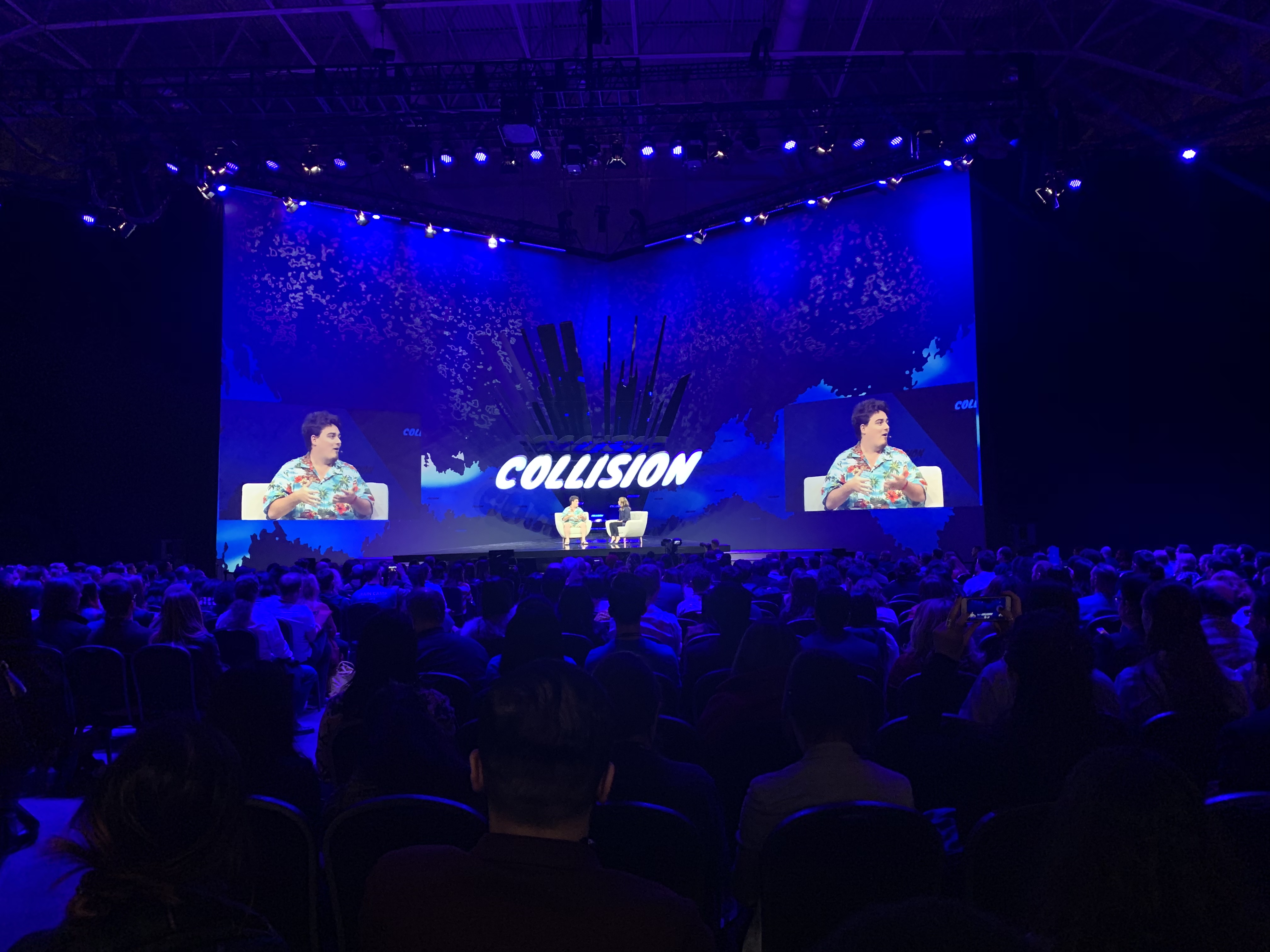Our Collision Experience (Views: 3481)
When you hear the claim, “one the fastest growing tech conferences in North America,” you expect greatness; so when the Fundica team took to Toronto to attend Collision, an event purporting to be exactly that, our standards were high.
Walking into the conference’s chosen venue—the Enercare Centre in Toronto, a convention centre of over 1 million square feet—we were both over and underwhelmed. Though the space was huge, its vastness in some respects dwarfed the stages and booths within it. The picnic and cocktail tables scattered near the entrance for easy networking seemed meant for dolls, and the sounds of the crowd—assuming that the total number of attendees reached 25,000, as predicted—were surprisingly hushed (although the theme music from select stages certainly did carry).

And yet, despite this matter of scale, Collision did a commendable job of filling the space. Five main stages—whose names and corresponding content alternated over the event’s four day run—roughly marked the venue’s outskirts. Their black draping—which acted, it seemed, as sound insulation—hide the brightly decorated stages behind them, which were replete with glowing Collision signage, set designs worthy of an off-Broadway theatre production, and large screens.

Smaller, less ornate, platforms occupied the venue’s other corners. Among them were the consistently packed Venture and Startup Workshop stages, the latter of which featured Collision’s very own pitch competition. Placed between these stages were rows of modest, wooden booths, which featured Collision's startups, loosely arranged by industry.
And then there were the booths. Though the least original aspect of the event in terms of content, from an aesthetic perspective, they were something to behold. Each company had a two-walled backdrop of approximately 10x20 feet, which featured their company profile in large format and full colour. Mailchimp, who recently expanded their product line to position themselves as a complete marketing platform, deserves special props for their booth, which boldly highlighted the platform’s new features using neon iterations of their trademark illustrations.

Indeed, branding—be it their own or that of their participants—was one of Collision’s strong points. When we first entered the convention center, we were immediately adorned with General Admission bracelets and name tags that blazed Collision’s signature pylon orange. Investors had their own silver swag, and startups, who were split into alpha and beta categories based on their stage, wore blue and red, respectively. These articles made it clear whose event we were at, but also distinctly marked who was who.
And, of course, knowing who’s who is one of the most important aspects of an event like Collision. Where networking was concerned, Collision’s opportunities were endless. Amongst the sheer masses of investors, entrepreneurs, and other industry professionals wandering the venue, it wasn’t uncommon to see to the occasional speaker or moderator, making their way from one stage to another. Investors, partners, and journalists had designated networking areas. The rest of us took to the common grounds in search of familiar faces.
With only three members of our team in attendance, it was impossible to catch all the content; but we did our best to absorb as much as possible. We forwent the more sensational talks (read: Akon’s presentation of Akoin), in favour of content that was relevant to Fundica, alternating most often between the Venture, SaaS, and Centre stages. Though some of the presentations were discouragingly anecdotal—too reminiscent of the many thought pieces and clickbait articles readily available online—others were insightful. Many of the talks that fell into this latter category re unsurprising; Alex Stamos (former chief security officer at Facebook) and Kara Swisher’s (co-founder of Recode) conversation about Facebook’s recent fall from grace (entitled Move slow and fix things), for instance, was intelligent and informative. Oculus VR founder Palmer Luckey’s discussion with Deirdre Bosa of CNBC was likewise riveting, though also troubling. Others gems, however, were offered by speakers that would be unrecognizable to followers of mainstream media, though likely still familiar to those with a foot in the entrepreneurial world. Des Traynor’s talk about the how to retain customers as a SaaS platform comes to mind.
At times, the talks and panels wandered from the topics suggested by their title or synopsis. Occasionally, they failed to even touch on them. But that was to be expected at an event boasting over 700 speakers. Of the content we caught, the largest, most contentious conversations were ethical in nature, revolving around the sociopolitical role and responsibility of tech giants (namely, Facebook), how to preserve—and maybe even enhance—humanism in the age of AI, and how to optimize entrepreneurship in an increasingly global market. In many cases, these fraught conversations were too large for the 20 minutes they were allotted. But it is arguably better to leave an event wanting more than to leave tired or overstimulated.
That said, in the coming months, on our own blog, we hope to deep-dive into some of the topics addressed, but not fully explored, during these talks. Because, at the end of the day, that is one of the greatest assets of a conference like Collision: its ability to inspire additional, independent thought in its wake. Having spent three days immersed in the conference's content, we feel more tuned into the startup ecosystem than ever before, and we hope that, moving forward, we can share that feeling with you.

